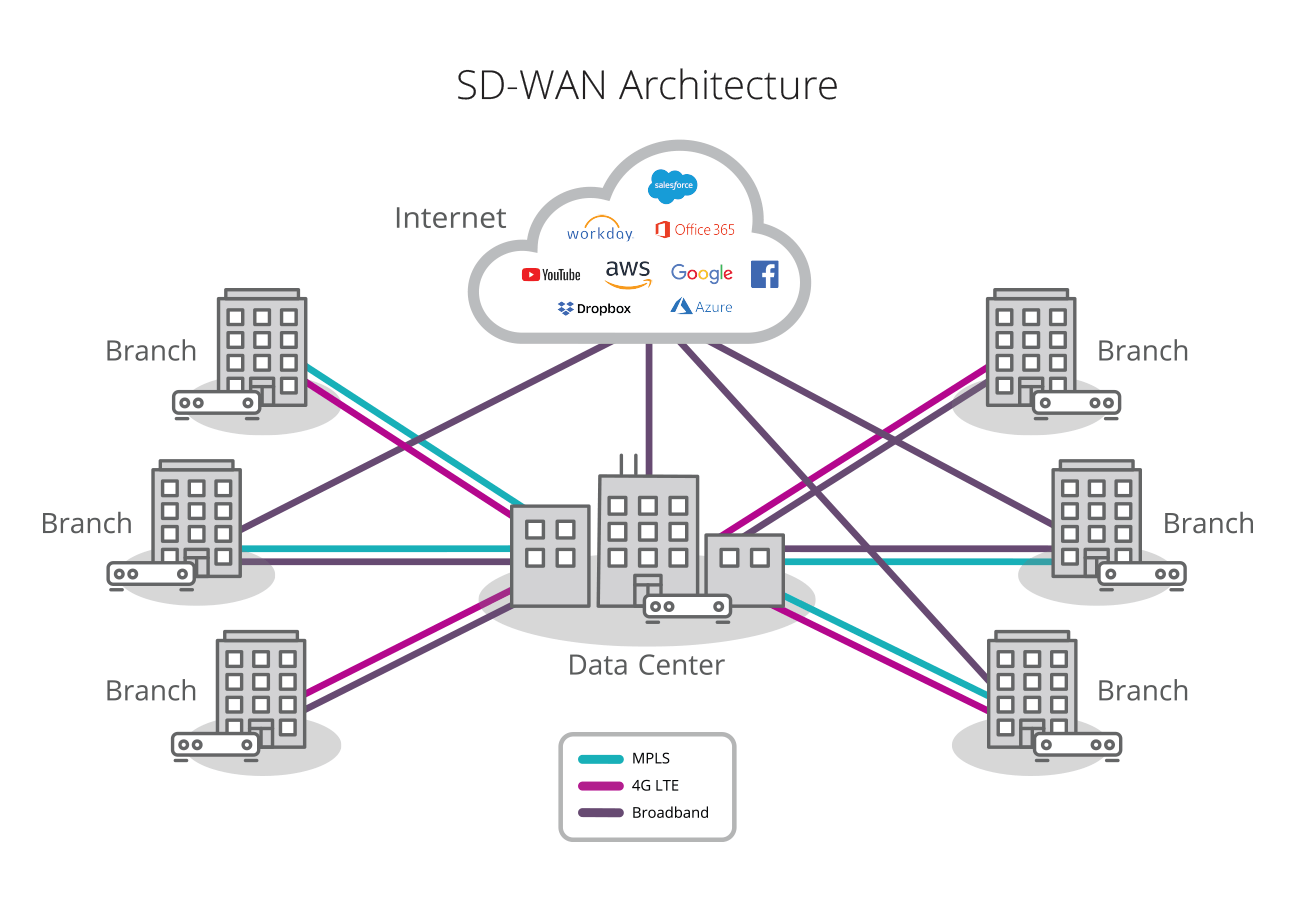A Software-defined Wide Area Network (SD-WAN) is a virtual WAN architecture that allows businesses to leverage any combination of carrier connectivity – including MPLS, broadband internet, wireless internet, LTE etc – to securely connect users to a corporate network.

A Software defined WAN uses a centralized control function to securely and intelligently direct traffic across the network. This enhances the user experience, increases business productivity and reduces costs for IT.
SD-WAN uses software and a centralized cloud controller to more intelligently direct traffic across the WAN. An SD-WAN handles traffic based on priority, quality of service and security requirements in accordance with the needs of the business. Instead of routing decisions being made at each router endpoint all routing decisions are made at the cloud controller simplifying the task of the endpoints and moving management to the cloud where IT can access it anywhere to make changes.
SD WAN allows you to connect MPLS, Internet, LTE etc from different providers into the same endpoint box treating them as a resource pool. Advanced software driven security and performance functionality in the central controller enable businesses to securely, reliably and actively use broadband and 4G LTE transport to carry application traffic instead of just using them as idle backups. By augmenting or even replacing MPLS with broadband businesses can reach that one "expensive" remote branch and significantly increase WAN bandwidth company-wide while lowering overall WAN costs.
SD WAN vs MPLS
SD WAN and MPLS are complimentary solutions. Its not an either or question. MPLS deployments still guarantee the best performance and highest security in modern wide area networking. However a hybrid strategy making use of SD WAN technology can be a bullet proof design. Many of our clients have rock solid MPLS networks with LTE deployed as a backup and failover. They then have a 3rd layer using broadband Internet for browsing traffic and as a last resort VPN for connectivity if needed. That is still a great design but most of the time businesses have a couple of locations where they can't get the same provider or the provider is too expensive in the market to provider fiber to the branch office. Often times due to budget constraints that branch office gets minimal bandwidth and yet costs more than double any other site eating up any additional budget to increase bandwidth anywhere in the corporate WAN.
This is where SD WAN shines....imagine a single box at each endpoint that doesn't need to be managed or configured locally because all the brains are in the cloud and can be managed from anywhere. Using that same box we can connect multiple carriers and any combination of circuits from private MPLS to cable or wireless internet. Through that box we can bond those connections into one large pipe, it can failover to any particular connection on the fly if a circuit goes down and it allows you to privately connect to the corporate network. With this technology you can make use of what used to be a backup circuit and make it part of the bandwidth pool with failover being automatic. Now you can take advantage of that mom and pop internet provider who happens to be all you can get at "that one" location and upgrade the bandwidth to 100mb without it costing an arm and leg.
There are 3 key benefits of SD WAN
- Centralized management - By centralizing the controller and the configuration of the network companies can reduce operating expenses and have an easier way to managed the network.
- Zero touch provisioning - Configuration, routing etc is programmed in the central controller and pushed out to all branch locations without having to manually program each device individually. This eliminated the need to send IT resources to branch locations whenever a new application is added or a policy changed.
- Improving application performance and increasing agility.
SD WAN allows IT to combine transport services into a single, logical high bandwidth connection. SD WAN addresses the current IT challenges. This new approach to network connectivity can lower operational costs and improve resource usage for multi-site deployments. IT administrators can use bandwidth more efficiently and ensure high levels of performance without sacrificing security or privacy.
To get a free network assessment and see if SD WAN is a good fit for your network click below...


